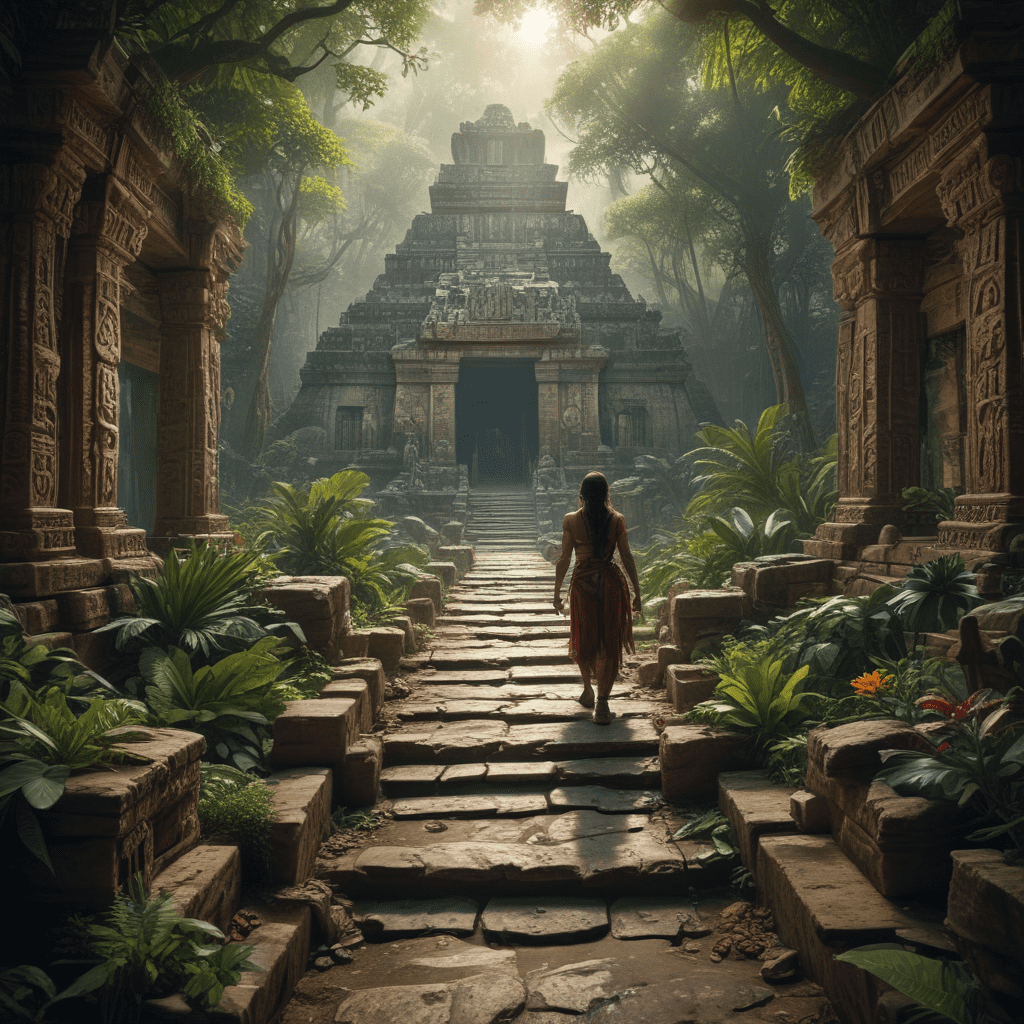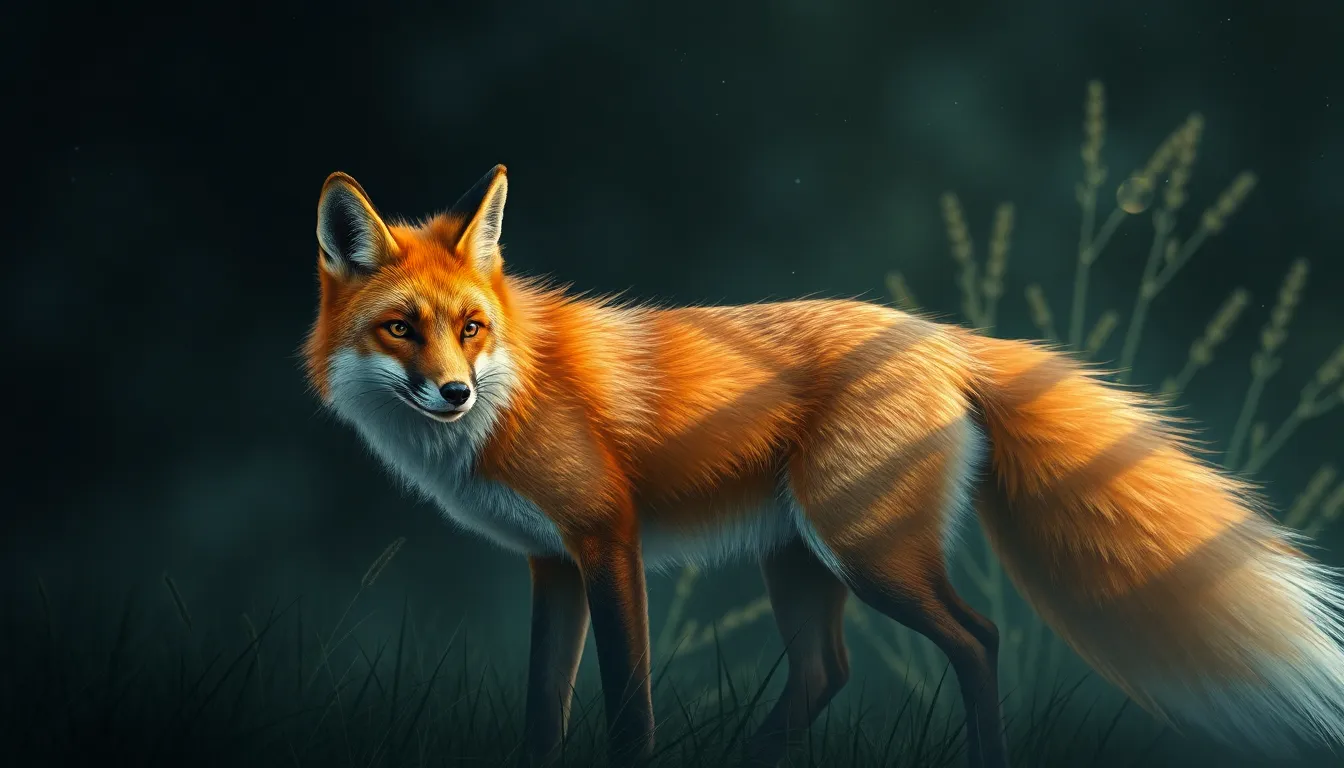Huldra and the Wild: Exploring the Spirit’s Role in Animal Folklore
I. Introduction
The Huldra is a captivating figure in Scandinavian folklore, often depicted as a beautiful woman with a cow’s tail, who dwells in the forests and mountains. This enchanting spirit embodies the mysteries of the wilderness and serves as a bridge between humans and the natural world. The relationship between the Huldra and animals is profound, reflecting the interconnectedness of all living beings in the realm of folklore. This article aims to examine the role of the Huldra in animal folklore, exploring its origins, characteristics, and modern interpretations.
II. The Origins of Huldra Mythology
The mythology of the Huldra has deep roots in Norse culture, emerging from the rich tapestry of beliefs surrounding nature and the supernatural. Historically, the Huldra was seen as a protector of the wilderness, embodying the spirits of the forests. Her character varies across different Scandinavian regions, with some versions portraying her as more benevolent, while others depict her as a dangerous seductress.
The connection between the Huldra and nature is significant; she is often associated with wild animals, symbolizing the untamed aspects of the natural world. As guardians of the forest, Huldra stories reflect humanity’s respect and fear of the wild, highlighting the delicate balance between civilization and the wilderness.
III. Huldra’s Characteristics and Symbolism
The Huldra is characterized by her striking beauty, long hair, and the distinctive cow’s tail that sets her apart from ordinary women. This tail is not just a physical trait but also a symbol of her connection to the animal kingdom and the natural world. The Huldra’s appearance often changes depending on the story; she may be depicted as a beautiful maiden or a more ominous figure, reflecting her dual nature.
- Protector of the Wilderness: The Huldra is often seen as a guardian of the forest, ensuring that nature remains untouched by human greed.
- Dangerous Seductress: In some tales, she lures men into the woods, representing the risks of venturing too far into the wild.
This duality of the Huldra enhances her symbolism within folklore, representing both the beauty and peril of nature. She embodies the wilderness’s allure while serving as a reminder of its dangers, thus maintaining a delicate balance in the narrative.
IV. Huldra and Animal Companions
Animal companions play a crucial role in Huldra stories, often serving as symbols of her connection to the natural world. These animals are not mere background characters; they are integral to the Huldra’s identity and narratives. Some notable animals associated with the Huldra include:
- Cows: Representing her ties to pastoral life and fertility, cows are often depicted as her loyal companions.
- Wolves: Symbolizing the wild and untamed spirit of nature, wolves often appear in stories as protectors or adversaries.
In these narratives, the animals reflect the Huldra’s character and the themes of the story, providing insight into her role as both a nurturer and a force of nature. The interactions between the Huldra and her animal companions emphasize the importance of wildlife in the folklore landscape.
V. Huldra in Modern Interpretations
In contemporary folklore and media, the Huldra has evolved, gaining new dimensions in literature, film, and art. Modern interpretations often explore her character in various ways, from romanticized depictions to more nuanced portrayals that emphasize her connection to environmental themes.
Examples include:
- Literature: The Huldra has appeared in novels and short stories, often as a metaphor for nature’s beauty and fragility.
- Film: Movies have adapted Huldra stories, sometimes focusing on her as a symbol of empowerment or as a cautionary tale about humanity’s relationship with nature.
- Art: Visual artists often depict the Huldra in various forms, highlighting her ethereal beauty and connection to the forest.
This evolution showcases the Huldra’s enduring appeal and relevance, as contemporary storytellers seek to connect modern audiences with ancient myths.
VI. Regional Variations and Similar Spirits
The Huldra is not alone in the world of folklore; she shares similarities with spirits from other cultures, such as Selkies and Dryads. These spirits often embody similar themes of nature, transformation, and the relationship between humans and wildlife.
Key comparisons include:
- Selkies: In Scottish folklore, Selkies are seal folk who can transform into humans, symbolizing the connection between land and sea.
- Dryads: In Greek mythology, Dryads are tree nymphs, representing the spirit of the trees and the importance of nature in human life.
Local wildlife significantly influences how these spirits are portrayed, shaping their narratives to reflect the environment in which they are found. Despite their differences, all these spirits share common themes of nature and animal connections, emphasizing the universal significance of wildlife in folklore.
VII. The Role of Huldra in Environmental Awareness
In an age of growing environmental concerns, the Huldra has emerged as a symbol of nature’s fragility and resilience. Folklore serves as a powerful tool for raising awareness about environmental issues, as stories of the Huldra highlight the importance of protecting our natural surroundings.
Key points include:
- Symbol of Nature’s Fragility: The Huldra represents the delicate balance of ecosystems, urging humans to respect and care for the environment.
- Folklore’s Influence on Conservation: Stories like those of the Huldra inspire conservation efforts, reminding us of the interconnectedness of all living beings.
- Modern Movements: Various environmental movements draw upon the symbolism of the Huldra to advocate for wildlife preservation and ecosystem protection.
Through her stories, the Huldra encourages a deeper understanding of our relationship with nature, urging us to appreciate and protect the wild spaces that sustain us.
VIII. Conclusion
The Huldra holds a significant place in animal folklore, embodying the complexities of the natural world. Her stories remind us of the beauty and danger that coexist in the wilderness and our responsibility to protect it. As we reflect on the enduring power of myth, we recognize the importance of preserving the stories of spirits like the Huldra in our modern world.
By appreciating and understanding these narratives, we foster a deeper connection to nature and promote the conservation of our environment, ensuring that the legacy of the Huldra and her kin lives on for generations to come.


